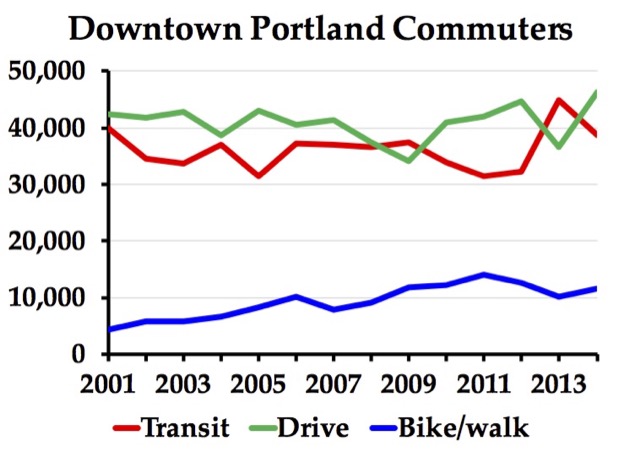A new report from the UCLA Institute of Transportation Studies finds that the main cause of declining ridership in southern California is poor people buying cars. Between 1990 and 2000, when ridership was growing, the Los Angeles region grew by 1.8 million people but only 456,000 cars, or about one car per four people. Between 2000 and 2010, when ridership was shrinking, the region grew by 2.3 million people and gained 2.1 million cars, or nearly one car per new person.
There is certainly something to this, but other factors are probably more important than the report estimates. The report says that neither ride sharing nor changes in transit service and fares have played an important role, and I suspect these conclusions are wrong.
The report shows that transit trips per capita peaked in 2007 and have declined in most years since then. Certainly the decline before around 2012 or 2013 was not due to ride sharing. But the decline steepened after 2014, and I suspect much of that decline is due to ride sharing. Continue reading








